Sven Boenicke became famous for speakers, however his company’s offer also includes various cables. One such an item – Boenicke Audio S3 – was sent my way several weeks ago and became this review’s subject. Enjoy!
Introduction
A DAC made by an audio house exclusively known for streamers sounds intriguing, doesn’t it? How about an amp released by a speaker manufacturer? Or furniture put together by someone thus far into petite decoupling pucks? Each of these quite realistic cases implies portfolio stretching, which is perfectly fine, of course as long as there’s more to this natural process than just a direct assault on our wallets. Most audio houses long enough in the business eventually expand their core offer via complementary goods, which happens to be the rather safe and commonsensical route. However, due to being mainly in pursuit of sonics and not uniform badges, enthusiasts don’t make things any easier for operations stepping into virgin territories.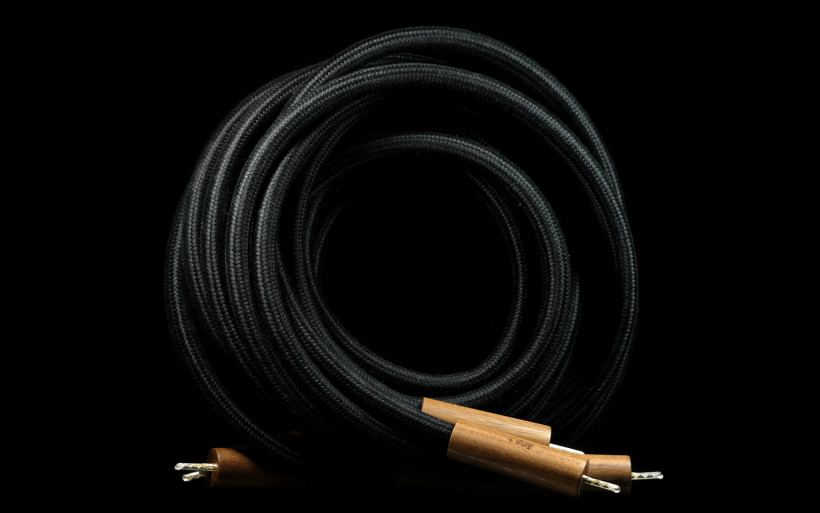 Audiophiles usually cherry-pick specialist brands known for one specific product type. Two or more under the same flag is a rare sight in setups of someone like i.e. yours truly. Leaps of faith as tokens of appreciation towards any audio establishment are off the table, that’s silly for those in the know who listen, compare and spend money only afterwards. That’s why landing a new product category quality wise on par with the primary one behind a given brand’s name, and then having it as equally successful in the long run, is a task to behold. Most such attempts end up as mere portfolio placeholders not taken seriously by those, for whom they were made in the first place. It sounds harsh, but that’s the reality.
Audiophiles usually cherry-pick specialist brands known for one specific product type. Two or more under the same flag is a rare sight in setups of someone like i.e. yours truly. Leaps of faith as tokens of appreciation towards any audio establishment are off the table, that’s silly for those in the know who listen, compare and spend money only afterwards. That’s why landing a new product category quality wise on par with the primary one behind a given brand’s name, and then having it as equally successful in the long run, is a task to behold. Most such attempts end up as mere portfolio placeholders not taken seriously by those, for whom they were made in the first place. It sounds harsh, but that’s the reality.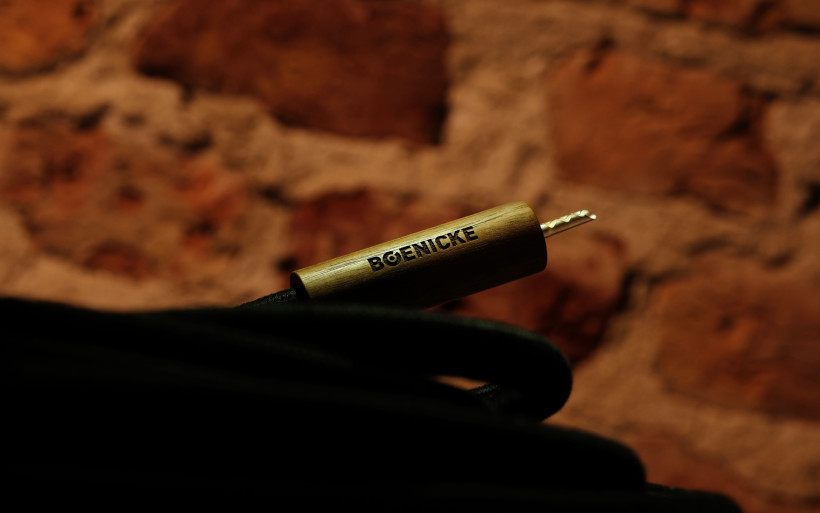 If I’d hear from any company’s representative about a new product type released solely to address its customers’ inquiries, I’d be mildly interested at best and most likely not impressed at all, which at times sadly happens. Needless to say, it’s quite the gap from there to being truly on-board with firm intent to investigate further and ask for a loaner. But if I’m told that a completely new branch of goods emerged as a result of i.e. long R&D time, several specialists hired, new machinery purchased or a firm base idea of what to do in the first place? That’s a different story. Each of these examples might serve as the very useful spark for one curious journo to order a sample first and ask all remaining questions later, however neither is the case today. A cooperation between two now very known European companies happens to be this assignment’s primary pitch, whereas their owners’ openness and transparency made it this much more interesting. This time around all my questions came first, they had to.
If I’d hear from any company’s representative about a new product type released solely to address its customers’ inquiries, I’d be mildly interested at best and most likely not impressed at all, which at times sadly happens. Needless to say, it’s quite the gap from there to being truly on-board with firm intent to investigate further and ask for a loaner. But if I’m told that a completely new branch of goods emerged as a result of i.e. long R&D time, several specialists hired, new machinery purchased or a firm base idea of what to do in the first place? That’s a different story. Each of these examples might serve as the very useful spark for one curious journo to order a sample first and ask all remaining questions later, however neither is the case today. A cooperation between two now very known European companies happens to be this assignment’s primary pitch, whereas their owners’ openness and transparency made it this much more interesting. This time around all my questions came first, they had to.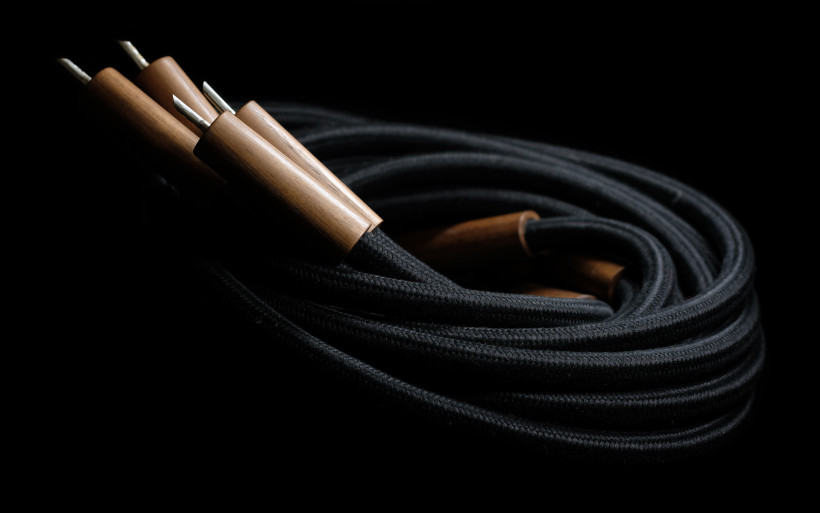 My fairly good understanding of Sven Boenicke’s speakers and philosophy resulted in putting money where my mouth was and purchasing the man’s W5 and W8 models several years back. The second operation – LessLoss – scored its debut at HFK just a year ago, but has been known to me for far longer. Three its products reviewed since October 2018 allowed me to grasp Louis Motek’s goals, which led to appreciation towards his work. All LessLoss loaners morphed into very useful tools in my own, hence never left my place, which is probably a recommendation more meaningful and impactful than any prize mark I can think of. However, my on-going track record with both brands isn’t key for this review, its major focal point is found elsewhere. Not only Sven and Louis have been friends for about two decades or so, but also on the same page as far as signal transmission and resonance control go in audio, that’s the most interesting bit. Today’s Boenicke Audio S3 speaker cable is the result of their conjoined effort.
My fairly good understanding of Sven Boenicke’s speakers and philosophy resulted in putting money where my mouth was and purchasing the man’s W5 and W8 models several years back. The second operation – LessLoss – scored its debut at HFK just a year ago, but has been known to me for far longer. Three its products reviewed since October 2018 allowed me to grasp Louis Motek’s goals, which led to appreciation towards his work. All LessLoss loaners morphed into very useful tools in my own, hence never left my place, which is probably a recommendation more meaningful and impactful than any prize mark I can think of. However, my on-going track record with both brands isn’t key for this review, its major focal point is found elsewhere. Not only Sven and Louis have been friends for about two decades or so, but also on the same page as far as signal transmission and resonance control go in audio, that’s the most interesting bit. Today’s Boenicke Audio S3 speaker cable is the result of their conjoined effort.
Build
Upon asking Sven and Louis how today’s product came to be, informative answers arrived from both ends and were the very same. This status quo kept theorycrafting off the table and invoked the notion of both individuals willing to stick to the facts, rather than putting own input on the pedestal and stealing glory one from another. OEM modules by one manufacturer hid inside of a product with a different logo on it are nothing new, yet secrecy on such cooperative subjects is the audio industry’s usual routine. That’s why I’ve found the Swiss-Lithuanian attitude refreshingly healthy and friendly indeed.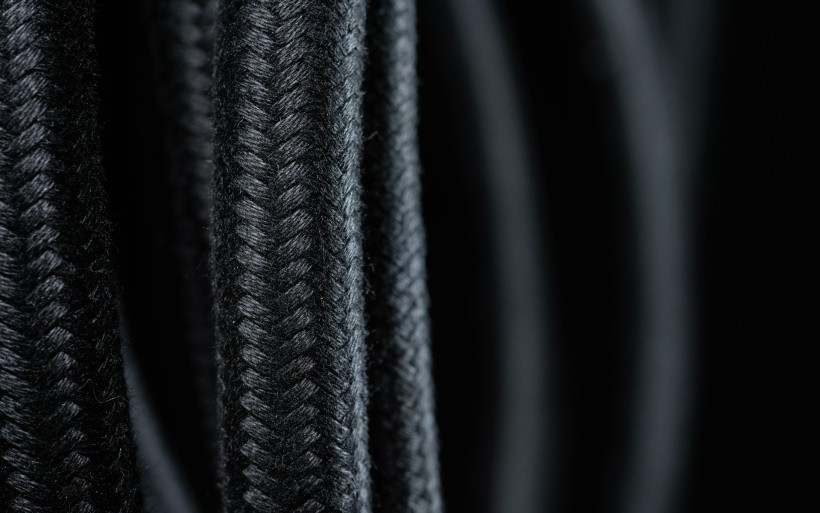 The S3’s Lithuanian origin is no secret, it arrived to my place from the LessLoss HQ directly as that’s the place where they’re assembled, but the idea behind this product was born in Sven’s mind. Upon recognizing enormous potential in LessLoss’s proprietary technology many springs ago, the Swiss then asked Louis about a product based on the same core principle, yet tiered higher and with the intent to be sold under the Boenicke Audio brand exclusively. Sven financed the newcomer cable’s R&D and became the sole owner of this design, however its very steep ask informs us that exclusiveness is a costly thing in audio.
The S3’s Lithuanian origin is no secret, it arrived to my place from the LessLoss HQ directly as that’s the place where they’re assembled, but the idea behind this product was born in Sven’s mind. Upon recognizing enormous potential in LessLoss’s proprietary technology many springs ago, the Swiss then asked Louis about a product based on the same core principle, yet tiered higher and with the intent to be sold under the Boenicke Audio brand exclusively. Sven financed the newcomer cable’s R&D and became the sole owner of this design, however its very steep ask informs us that exclusiveness is a costly thing in audio.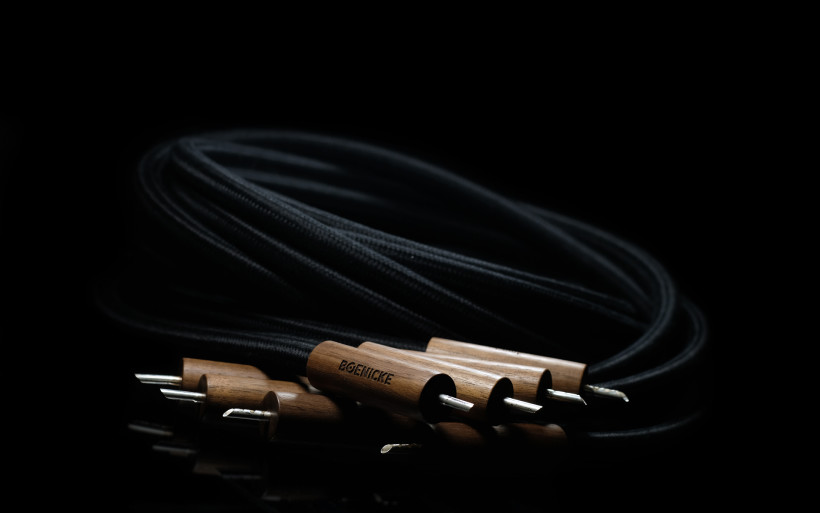 Boenicke Audio S3 is Sven’s TOTL cable product, the remaining two are known as S1 and S2. Its final version took only three months to complete, just because it was known since day one what needed to be done to arrive there. The LessLoss C-MARC technology itself took six years of R&D, but most importantly Louis explained that it can be limitlessly upscaled to gain results accordingly more and more efficient. However, each additional fractal replication scale above the core C-MARC tech (as found in all currently offered LessLoss cable products) raises complexity, hence introduces a major spike in manufacturing time and difficulty, which then impacts cost. In a nutshell, that’s what Sven paid for in effect, his very own S3 speaker cable is inherently a C-MARC pushed to the next level.
Boenicke Audio S3 is Sven’s TOTL cable product, the remaining two are known as S1 and S2. Its final version took only three months to complete, just because it was known since day one what needed to be done to arrive there. The LessLoss C-MARC technology itself took six years of R&D, but most importantly Louis explained that it can be limitlessly upscaled to gain results accordingly more and more efficient. However, each additional fractal replication scale above the core C-MARC tech (as found in all currently offered LessLoss cable products) raises complexity, hence introduces a major spike in manufacturing time and difficulty, which then impacts cost. In a nutshell, that’s what Sven paid for in effect, his very own S3 speaker cable is inherently a C-MARC pushed to the next level.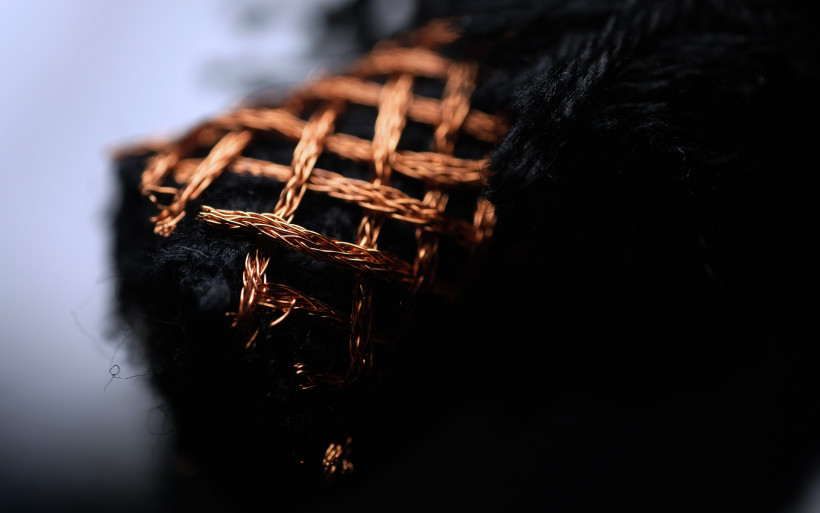 In several ways the Boenicke Audio S3 is quite similar to the LessLoss C-MARC I’ve been using for several months. Both products share connection directivity, mercerized cotton inside and out and each arrives as four individual runs in total, two per each speaker. This separation is in order to limit interactions between polarities of ‘+’ and ‘-‘ lines. But the former product is substantially thicker thus less slinky, and finished with big wooden barrels instead of heat shrink tubing cuts found on the LessLoss C-MARC’s ends. It’s no surprise that both products are as equally nicely made, but in hand it’s rather obvious which one is more expensive.
In several ways the Boenicke Audio S3 is quite similar to the LessLoss C-MARC I’ve been using for several months. Both products share connection directivity, mercerized cotton inside and out and each arrives as four individual runs in total, two per each speaker. This separation is in order to limit interactions between polarities of ‘+’ and ‘-‘ lines. But the former product is substantially thicker thus less slinky, and finished with big wooden barrels instead of heat shrink tubing cuts found on the LessLoss C-MARC’s ends. It’s no surprise that both products are as equally nicely made, but in hand it’s rather obvious which one is more expensive. To push the Swiss-Lithuanian openness further, a short cut of the S3 with its cross section fully open was sent, which revealed the key difference between today’s and the more affordable LessLoss’s C-MARC. The former’s conductive area of 3.5mm2 in total is a 99,99% pure cryogenized single copper ‘sleeve’ spun around the core made of tightly packed mercerized cotton. Each its individual lacquer-insulated 0.125mm thick copper hair spirally wound clockwise, is then mated with its oppositely polarized counterpart turned counter-clockwise and with the same number of coils per unit distance. Two opposite magnetic fields induced at the same exact location are balanced, hence they cancel each other out. This results in interference immunity and silence, yet with no shielding involved. Such braiding geometry also known as humbucker is the very core of the C-MARC principle. Boenicke Audio S3 incorporates 24 bundles of 12 conductive Litz strands each, 288 Litz wires in total. Half of the individual Litz strands are left spiraling, the other half are right spiraling. This again applies in 50-50 ratio to the resulting bundles, thus forming the second scale fractal effect.
To push the Swiss-Lithuanian openness further, a short cut of the S3 with its cross section fully open was sent, which revealed the key difference between today’s and the more affordable LessLoss’s C-MARC. The former’s conductive area of 3.5mm2 in total is a 99,99% pure cryogenized single copper ‘sleeve’ spun around the core made of tightly packed mercerized cotton. Each its individual lacquer-insulated 0.125mm thick copper hair spirally wound clockwise, is then mated with its oppositely polarized counterpart turned counter-clockwise and with the same number of coils per unit distance. Two opposite magnetic fields induced at the same exact location are balanced, hence they cancel each other out. This results in interference immunity and silence, yet with no shielding involved. Such braiding geometry also known as humbucker is the very core of the C-MARC principle. Boenicke Audio S3 incorporates 24 bundles of 12 conductive Litz strands each, 288 Litz wires in total. Half of the individual Litz strands are left spiraling, the other half are right spiraling. This again applies in 50-50 ratio to the resulting bundles, thus forming the second scale fractal effect.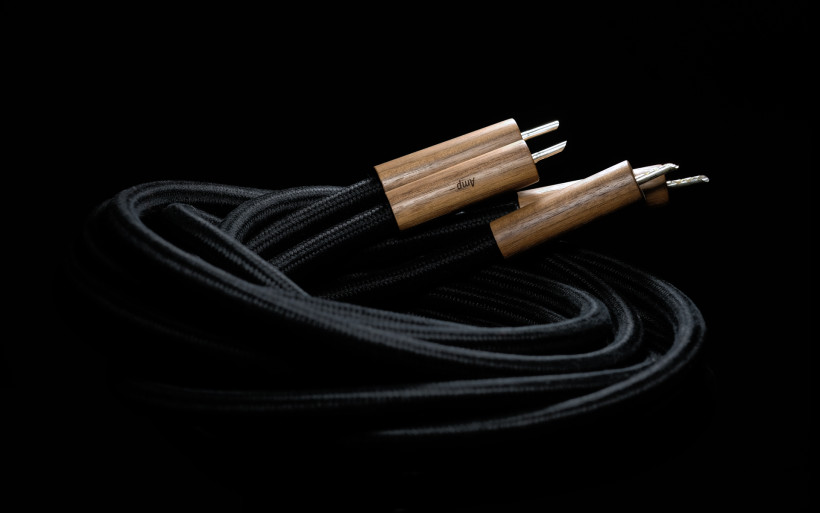 The Boenicke Audio S3’s wooden barrels sport nicely engraved ‘amp +’ and ‘amp -‘ marks to identify which end goes where. These labels also inform us about proper connection directivity. Although visually bulky, the product itself is surprisingly light. My loaner was finished with KLEI Classic Harmony BFA-styled banana plugs by Eichmann, of course without their original plastic enclosures. The less artificial materials there are, the better, that’s the motto of today’s item. A regular consumer who doesn’t extensively swap cables will be perfectly fine with it. However, if such a product is on my menu, I most likely will plug and unplug it multiple times a day. Once the S3 was installed in speaker terminals, its stiffness plus rather long wooden ends led to quite the leverage pulled down by the cable itself. No fault was developed during several weeks long usage time, but as a customer I’d address this matter via i.e. termination with spades. Since these are also available, we’re all good.
The Boenicke Audio S3’s wooden barrels sport nicely engraved ‘amp +’ and ‘amp -‘ marks to identify which end goes where. These labels also inform us about proper connection directivity. Although visually bulky, the product itself is surprisingly light. My loaner was finished with KLEI Classic Harmony BFA-styled banana plugs by Eichmann, of course without their original plastic enclosures. The less artificial materials there are, the better, that’s the motto of today’s item. A regular consumer who doesn’t extensively swap cables will be perfectly fine with it. However, if such a product is on my menu, I most likely will plug and unplug it multiple times a day. Once the S3 was installed in speaker terminals, its stiffness plus rather long wooden ends led to quite the leverage pulled down by the cable itself. No fault was developed during several weeks long usage time, but as a customer I’d address this matter via i.e. termination with spades. Since these are also available, we’re all good.
Sound
In order to review the Boenicke Audio S3, fidata HFAS-S10U handled storage and transport duties, then LampizatOr Pacific DAC (KR Audio T-100/Living Voice 300B + KR Audio 5U4G Ltd. Ed.) took over to pass the signal to either Kinki Studio EX-M1 or Trilogy 925, and then to Boenicke W8 and Buchardt S400 respectively. All key components were connected via LessLoss C-MARC cables to the GigaWatt PC-3 SE EVO+ power conditioner, which was then married to the main in-wall outlet via LC-3 EVO cable by the same manufacturer. The Amber-modded Excellence ICs by Audiomica Laboratory were used in-between my DAC and amps during the evaluation stage. The Buchardt S400 loaner was placed on Soundstyle Z1 stands. The LessLoss C-MARC has been my daily speaker cable since its arrival, but for a number of reasons it was off duty in case of this assignment. Its far lower retail price in comparison to the Boenicke Audio S3 is of fairly minor importance, on the contrary to their manufacturing process under the very same roof. That’s the most important factor. The LessLoss technology put up against its higher tiered version made for another company didn’t feel right. In addition, I can tell as early as now that, due to C-MARC braids inside of each, both these products share the same voicing as they should. The key disparity between them narrows down to one substantial and not flavouring related aspect only, which is why the Swiss-Lithuanian comparison would be anything but exciting. Of course the more affordable LessLoss C-MARC was on the brief job early on, just to map the S3’s own input and double-check my sanity and ears. But the main sparring partner for the Swiss was the also costly, sonically different and all in all far more fitting for the task Luna Cables Rouge, which yours truly already covered here.
The LessLoss C-MARC has been my daily speaker cable since its arrival, but for a number of reasons it was off duty in case of this assignment. Its far lower retail price in comparison to the Boenicke Audio S3 is of fairly minor importance, on the contrary to their manufacturing process under the very same roof. That’s the most important factor. The LessLoss technology put up against its higher tiered version made for another company didn’t feel right. In addition, I can tell as early as now that, due to C-MARC braids inside of each, both these products share the same voicing as they should. The key disparity between them narrows down to one substantial and not flavouring related aspect only, which is why the Swiss-Lithuanian comparison would be anything but exciting. Of course the more affordable LessLoss C-MARC was on the brief job early on, just to map the S3’s own input and double-check my sanity and ears. But the main sparring partner for the Swiss was the also costly, sonically different and all in all far more fitting for the task Luna Cables Rouge, which yours truly already covered here.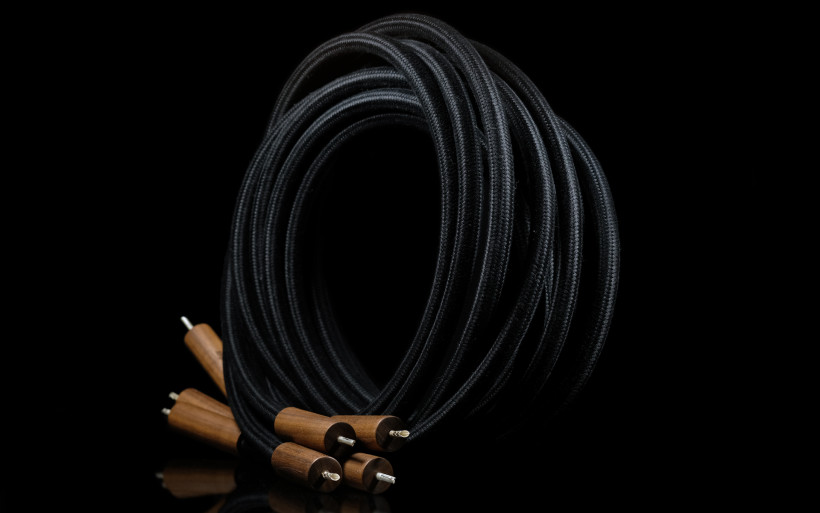 As the weakest link of any audio related comparisons, my own memory is the reason why returns to previously published reviews became a necessity. There’s no other way if upcoming work involves any long gone product auditioned in the past. But several rare cases etched their voice in my head firmly enough that there’s no need to backtrack, and Luna Cables Rouge reviewed several months ago happens to be one such an item. It quickly revealed its strong focus on music itself rather than fully honest approach in comparison to the Lithuanian. The former’s generous saturation, vividness, mellowness, very easygoing pastel colours and jolly expressiveness competed with the latter’s fine balance, insight, verve, upped overall pronunciation and openness. This resulted in two not entirely opposite but very different characteristics. However, both cables scored the alike notes on backdrop cleanliness, smoothness, sophistication and everything else related to inherent maturity, seasoning and their engineers’ capable ears above all else. The Canadian-Lithuanian fight back then ended in a draw, but that’s not the case this time around.
As the weakest link of any audio related comparisons, my own memory is the reason why returns to previously published reviews became a necessity. There’s no other way if upcoming work involves any long gone product auditioned in the past. But several rare cases etched their voice in my head firmly enough that there’s no need to backtrack, and Luna Cables Rouge reviewed several months ago happens to be one such an item. It quickly revealed its strong focus on music itself rather than fully honest approach in comparison to the Lithuanian. The former’s generous saturation, vividness, mellowness, very easygoing pastel colours and jolly expressiveness competed with the latter’s fine balance, insight, verve, upped overall pronunciation and openness. This resulted in two not entirely opposite but very different characteristics. However, both cables scored the alike notes on backdrop cleanliness, smoothness, sophistication and everything else related to inherent maturity, seasoning and their engineers’ capable ears above all else. The Canadian-Lithuanian fight back then ended in a draw, but that’s not the case this time around.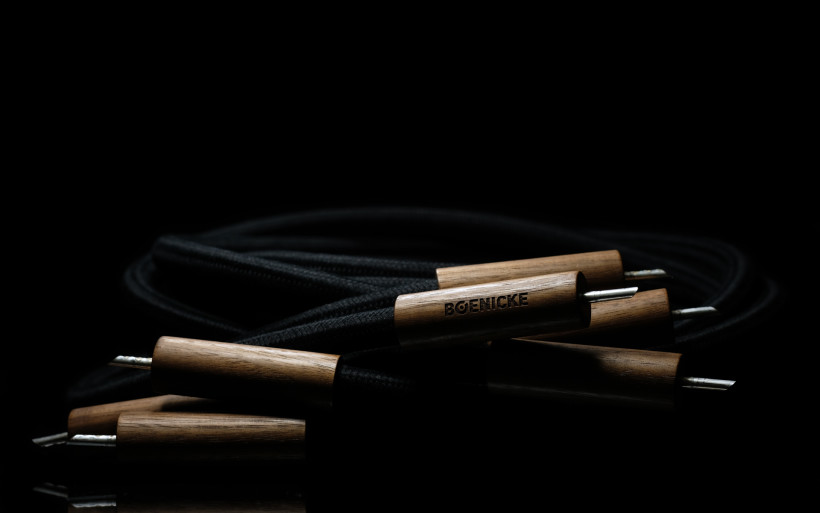 To briefly address the elephant in the room, different potency level is the crucial disparity between the LessLoss C-MARC and this review’s S3. Both extract and reveal associated hardware’s voice without sugarcoating anything along the road but, as a beneficiary of the C-MARC technology of higher tier, the Swiss introduces all key traits in more resolving and explicit fashion. Not design exclusivity and/or distribution margins but utmost potent push in the silent and revealing direction is in fact what this cable’s final tab covers in the first place, and the Rouge helped me in understanding this.
To briefly address the elephant in the room, different potency level is the crucial disparity between the LessLoss C-MARC and this review’s S3. Both extract and reveal associated hardware’s voice without sugarcoating anything along the road but, as a beneficiary of the C-MARC technology of higher tier, the Swiss introduces all key traits in more resolving and explicit fashion. Not design exclusivity and/or distribution margins but utmost potent push in the silent and revealing direction is in fact what this cable’s final tab covers in the first place, and the Rouge helped me in understanding this.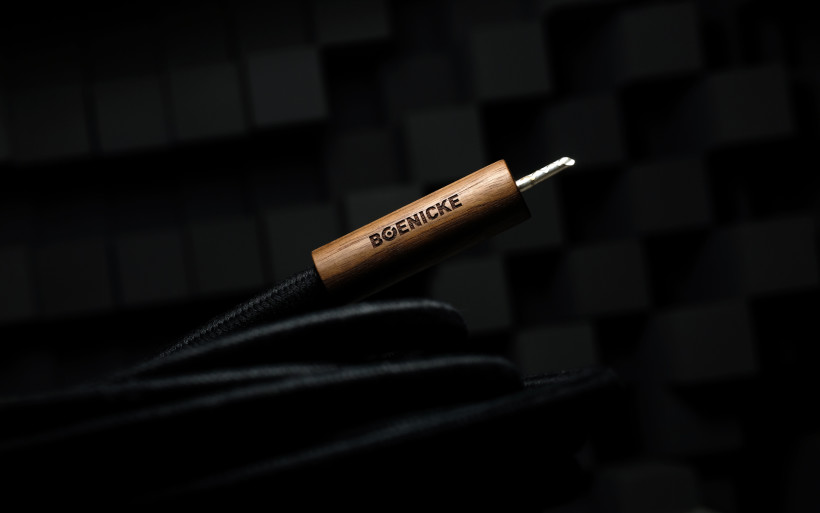 The Boenicke Audio S3’s bass impulses quicker and more fierce resulted in stronger kicks, higher score on momentum and swiftness plus in general more perceptible downstairs with repertoire i.e. based on artificially generated low end. The S3 also reached deeper and introduced wider more effortlessly showcased dynamic contrasts between slams. Its bass outlined more explicitly than the Rouge’s, was filled with pigment accordingly to auditioned music’s demand; from generously tactile and bloomy to direct, a bit dry, firm and short. Any downstairs type today’s product had to work on in a given recording, it turned into the very best version of itself and portrayed all distinctions remarkably well, just as a proper C-MARC specimen should. The Rouge on the other hand didn’t go as low as its competitor, felt heftier and always injected pleasant mildness into bass. Punches crazy and wild with the S3, the Canadian delivered in softer, more polite and texturally lavish fashion, whereas its also admirable crack wasn’t quite as fully developed in comparison. The Rouge’s focus on substance and carefully applied roundness in the bass realm was something yours truly was already aware of, but most interestingly the S3 made all this simply very obvious past each swap.
The Boenicke Audio S3’s bass impulses quicker and more fierce resulted in stronger kicks, higher score on momentum and swiftness plus in general more perceptible downstairs with repertoire i.e. based on artificially generated low end. The S3 also reached deeper and introduced wider more effortlessly showcased dynamic contrasts between slams. Its bass outlined more explicitly than the Rouge’s, was filled with pigment accordingly to auditioned music’s demand; from generously tactile and bloomy to direct, a bit dry, firm and short. Any downstairs type today’s product had to work on in a given recording, it turned into the very best version of itself and portrayed all distinctions remarkably well, just as a proper C-MARC specimen should. The Rouge on the other hand didn’t go as low as its competitor, felt heftier and always injected pleasant mildness into bass. Punches crazy and wild with the S3, the Canadian delivered in softer, more polite and texturally lavish fashion, whereas its also admirable crack wasn’t quite as fully developed in comparison. The Rouge’s focus on substance and carefully applied roundness in the bass realm was something yours truly was already aware of, but most interestingly the S3 made all this simply very obvious past each swap. My initial assumption of the S3’s midrange served exactly accordingly to mastering quality, hence drier in comparison to the Canadian’s generously wet input, was partially a miss. To my surprise the Swiss proved to be as equally expressive and natural as long as quality material was on. Both products painted i.e. female vocals finely sketched, subtle and internally moist, and amplified guitars had their raw drive and colour in check on rock operas and metal music. If anything, the Rouge was a bit rounder not as keen in showcasing all textural shifts as clearly due to inherent focus on saturation and overall intensity, which introduced the sensation of its mids always subjected to a prettifying procedure. This led to the admirably tuneful effect in vast majority of cases on my playlist. Upon demand the S3 did midrange magic no lesser than its opponent, but this FR inherently uninviting and texturally flat remained as such. Due to this, many ears would take the Swiss attitude as fussy, whereas my own pair mapped it as honest, and the real question to ask would be whether one’s ready for it. To be fair, Sven’s product made i.e. vocals of better quality than they originally were, yet via two traits exclusively associated with imaging; clear outlines and grain-free delivery. But flavouring and overall character remained intact, which the more enchantingly voiced Rouge always augmented a bit.
My initial assumption of the S3’s midrange served exactly accordingly to mastering quality, hence drier in comparison to the Canadian’s generously wet input, was partially a miss. To my surprise the Swiss proved to be as equally expressive and natural as long as quality material was on. Both products painted i.e. female vocals finely sketched, subtle and internally moist, and amplified guitars had their raw drive and colour in check on rock operas and metal music. If anything, the Rouge was a bit rounder not as keen in showcasing all textural shifts as clearly due to inherent focus on saturation and overall intensity, which introduced the sensation of its mids always subjected to a prettifying procedure. This led to the admirably tuneful effect in vast majority of cases on my playlist. Upon demand the S3 did midrange magic no lesser than its opponent, but this FR inherently uninviting and texturally flat remained as such. Due to this, many ears would take the Swiss attitude as fussy, whereas my own pair mapped it as honest, and the real question to ask would be whether one’s ready for it. To be fair, Sven’s product made i.e. vocals of better quality than they originally were, yet via two traits exclusively associated with imaging; clear outlines and grain-free delivery. But flavouring and overall character remained intact, which the more enchantingly voiced Rouge always augmented a bit. 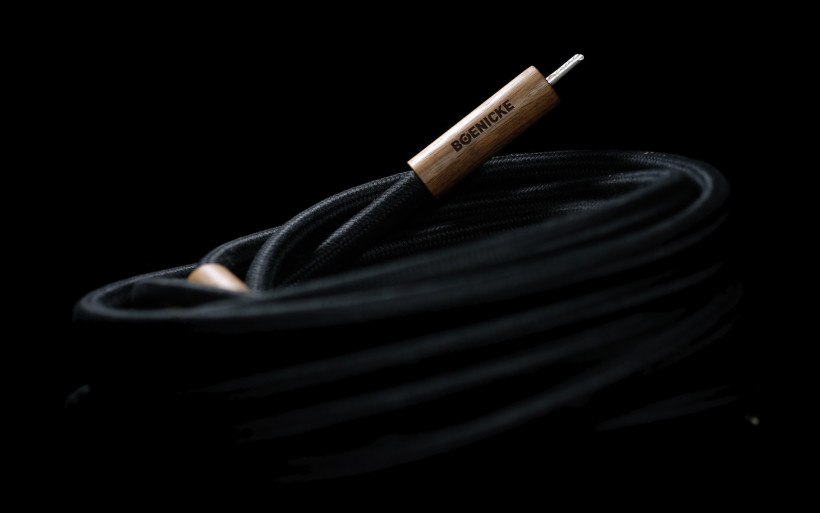 Smooth, refined, easygoing and not hot at all, both cables did splendidly up top and quality wise were even. The Boenicke Audio S3 extracted and magnified more nuances and tiny particles, longer decays and always remained utmost subtle. The Rouge had the same range a bit weightier, shorter and darker, which actually nicely complemented its natural voicing. But fundamentally different approaches to music aside, everything imaging related emerged as the second biggest dissimilarity between both contestants. The Canadian clearly drew the very first row closer to me and painted its residents naturally bold and massive, hence more intimate rather than perfectly orderly. It located all instruments in several ample bubbles loosely glued together, which my ears have found well-fitting for this cable’s emotional character.
Smooth, refined, easygoing and not hot at all, both cables did splendidly up top and quality wise were even. The Boenicke Audio S3 extracted and magnified more nuances and tiny particles, longer decays and always remained utmost subtle. The Rouge had the same range a bit weightier, shorter and darker, which actually nicely complemented its natural voicing. But fundamentally different approaches to music aside, everything imaging related emerged as the second biggest dissimilarity between both contestants. The Canadian clearly drew the very first row closer to me and painted its residents naturally bold and massive, hence more intimate rather than perfectly orderly. It located all instruments in several ample bubbles loosely glued together, which my ears have found well-fitting for this cable’s emotional character.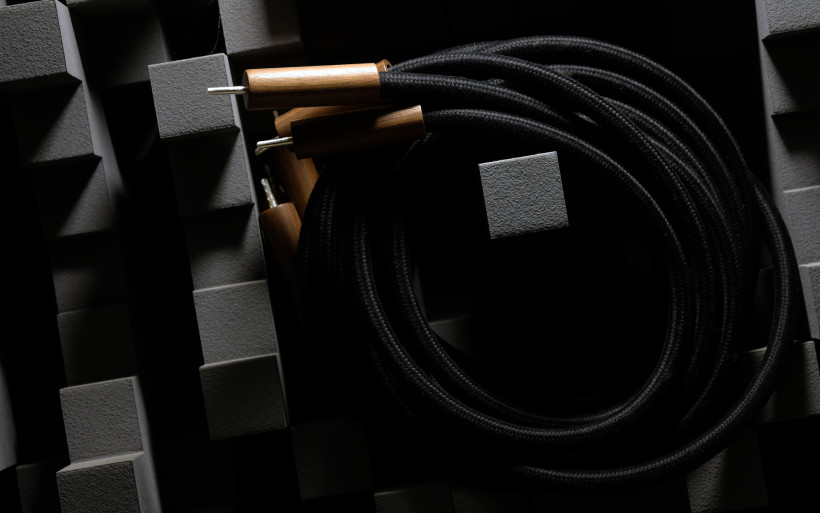 The same soundstage work the Boenicke Audio S3 did substantially differently. It increased distance between the hot seat and virtual sound sources to inject more air around them and have their contours outlined finer, which led to more expansive and open landscapes. In many cases this would imply top level picturesque quality of the gutsy Canadian versus more uniform if not a bit diluted approach of the Swiss. But the latter had its instrumental and vocal sizing in perfect check. No shrinkage occurred due to its first row located a bit further, but everything was put inside of a frame bigger than the Rouge’s and this alone changed a lot. Due to greater downstairs potency, today’s had large Taiko drums located somewhere in the background both optically and audibly more massive. Generously oxygenated soundstage, all virtual shapes more distinctive plus greater spatial width, depth and overall complexity also contributed to the effect.
The same soundstage work the Boenicke Audio S3 did substantially differently. It increased distance between the hot seat and virtual sound sources to inject more air around them and have their contours outlined finer, which led to more expansive and open landscapes. In many cases this would imply top level picturesque quality of the gutsy Canadian versus more uniform if not a bit diluted approach of the Swiss. But the latter had its instrumental and vocal sizing in perfect check. No shrinkage occurred due to its first row located a bit further, but everything was put inside of a frame bigger than the Rouge’s and this alone changed a lot. Due to greater downstairs potency, today’s had large Taiko drums located somewhere in the background both optically and audibly more massive. Generously oxygenated soundstage, all virtual shapes more distinctive plus greater spatial width, depth and overall complexity also contributed to the effect. Both products made unique use of their excellent pitch black canvases and did so truly well. The picturesque hence more situational Rouge is clearly tailored to serve music tunefully, whereas the utmost insightful and universal S3 reveals it and connected hardware. The difference in these approaches is anything but small and it wouldn’t be a surprise to see the former as the one with more thumbs up, it’s a major charmer and crowd pleaser after all, but my unequivocal vote goes to the Swiss. Quality repertoire it handled as tangibly and vividly as its opponent, yet reached substantially higher via top shelf refinement propagated all across the board. The ability to maintain the very same A game on every single count translates to off charts completeness, which effectively turned the impressively balanced S3 into Susvara headphones of the cable land in my book.
Both products made unique use of their excellent pitch black canvases and did so truly well. The picturesque hence more situational Rouge is clearly tailored to serve music tunefully, whereas the utmost insightful and universal S3 reveals it and connected hardware. The difference in these approaches is anything but small and it wouldn’t be a surprise to see the former as the one with more thumbs up, it’s a major charmer and crowd pleaser after all, but my unequivocal vote goes to the Swiss. Quality repertoire it handled as tangibly and vividly as its opponent, yet reached substantially higher via top shelf refinement propagated all across the board. The ability to maintain the very same A game on every single count translates to off charts completeness, which effectively turned the impressively balanced S3 into Susvara headphones of the cable land in my book.
Summary
In theory, the odds of Boenicke Audio S3 any successful are slim at best; its ask goes substantially beyond some of Sven’s core products, his operation isn’t known for cables and their market flooded with fierce competition looks like a proper war zone, which also doesn’t help. At least that’s what those aware of how the industry works would think without knowing today’s product. Nonetheless, the poker-faced Swiss did a spot on fundamental job with it; he recognized quality and potential in just the right technology and knew just the right individual to turn the S3 idea into a bomb of a performer, as far from being just an insignificant portfolio extender as it gets. That’s the reality.
Boenicke Audio S3 is made well and on hand feels luxuriously enough to recognize an expensive product in it, but all this is of minor importance and can be easily said about many other cables sold for far less. Technological exclusivity and distribution based business model do a much better job in explaining today’s undeniably steep ask. It’s not unreal all things considered. However, the S3’s performance comes in before all else, that’s the main reason why it’s this costly. Other factors contribute from positions way down the importance line, which is just how it should be.
My familiarity with LessLoss products at some point led to a fair question about a result of this company’s C-MARC technology pushed further, and Boenicke Audio S3 is the answer. It’s a major understatement to say that this product sounds very good. I’ve had my fair share of expensive speaker cables in the past, yet neither introduced transparency, completeness, overall potency and balance as explicitly as Sven’s C-MARC loaded S3 did. None was as effective on as many fronts as this one, and that’s why it became the victorious benchmark to beat. ‘Till next time!
Associated Equipment:
- Amplifier: Trilogy 925, Kinki Studio EX-M1
- DAC: LampizatOr Pacific (KR Audio T-100 / Living Voice 300B + KR Audio 5U4G Ltd. Ed.)
- Speakers: Boenicke Audio W8, Buchardt Audio S400
- Transport: fidata HFAS-S10U
- Speaker cables: Luna Cables Rouge, LessLoss C-MARC
- Interconnects: Audiomica Laboratory Erys Excellence
- Power components: Gigawatt PC-3 SE EVO+, Gigawatt PF-2 + Gigawatt LC-2 MK2 + Forza AudioWorks Noir Concept/Audiomica Laboratory Ness Excellence/LessLoss C-MARC
- Rack: Franc Audio Accesories Wood Block Rack
- Music: NativeDSD
Retail prices of reviewed components in EU (incl. 22% VAT):
- Boenicke Audio S3 speaker cable 2.0/2.5/3.0/3.5/4.0m: €7’744/8’657/9’575/10’498/11’414
Manufacturer: Boenicke Audio














































